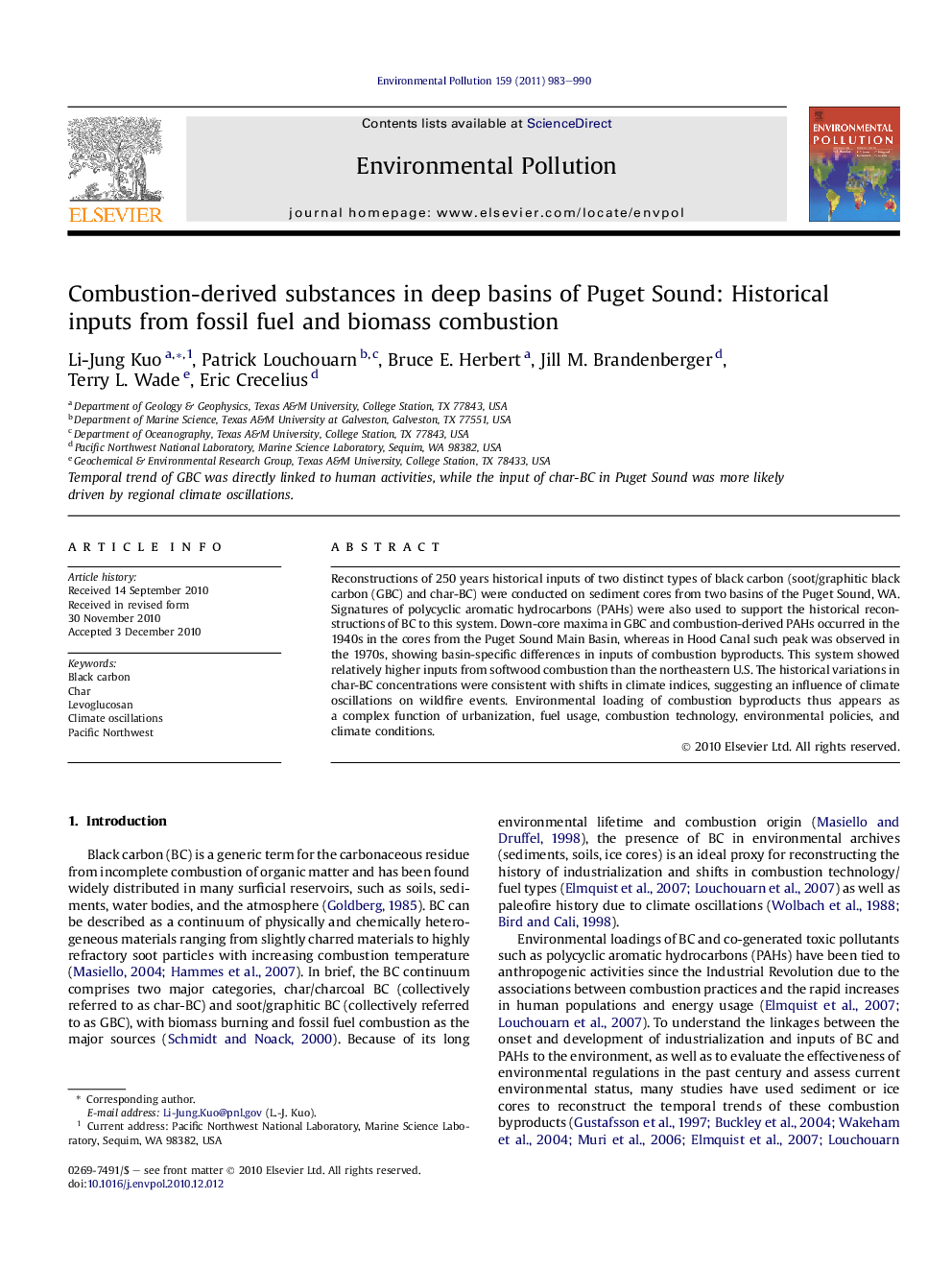| Article ID | Journal | Published Year | Pages | File Type |
|---|---|---|---|---|
| 4424851 | Environmental Pollution | 2011 | 8 Pages |
Reconstructions of 250 years historical inputs of two distinct types of black carbon (soot/graphitic black carbon (GBC) and char-BC) were conducted on sediment cores from two basins of the Puget Sound, WA. Signatures of polycyclic aromatic hydrocarbons (PAHs) were also used to support the historical reconstructions of BC to this system. Down-core maxima in GBC and combustion-derived PAHs occurred in the 1940s in the cores from the Puget Sound Main Basin, whereas in Hood Canal such peak was observed in the 1970s, showing basin-specific differences in inputs of combustion byproducts. This system showed relatively higher inputs from softwood combustion than the northeastern U.S. The historical variations in char-BC concentrations were consistent with shifts in climate indices, suggesting an influence of climate oscillations on wildfire events. Environmental loading of combustion byproducts thus appears as a complex function of urbanization, fuel usage, combustion technology, environmental policies, and climate conditions.
Research highlights► We reconstructed the historical inputs of GBC and char-BC in Puget Sound, WA, USA. ► Temporal trend of GBC was linked to human activities (urbanization, fuel usage). ► Temporal trend of char-BC was more likely driven by regional climate oscillations. ► Historical trends of combustion byproducts show the geographical heterogeneities.
